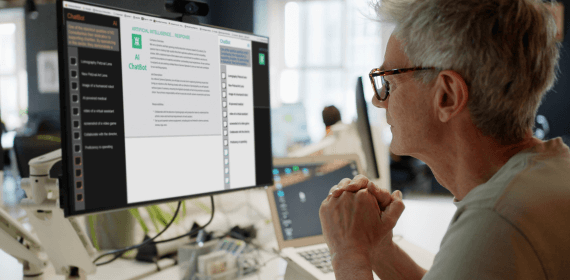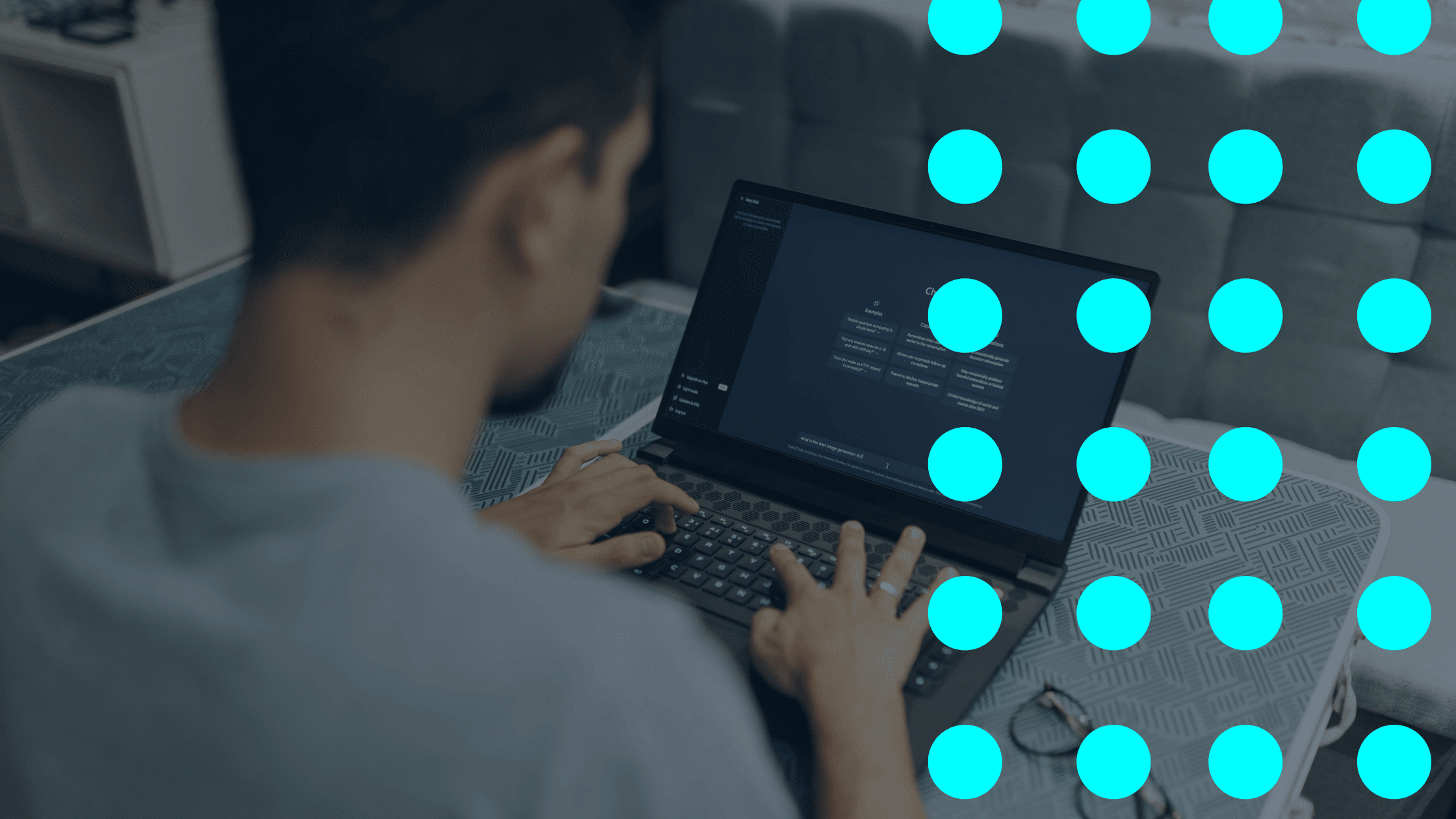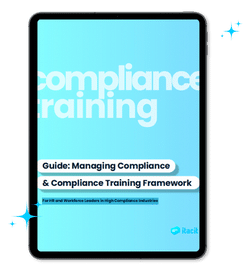Organizations that cannot adapt to market changes quickly lose ground to their competitors. Generative AI knowledge management provides a solution that helps businesses remain agile and responsive in today’s ever-changing environment.
Companies have invested billions of dollars to address knowledge management challenges. Generative AI brings a fundamental transformation to your organization’s information flow. Your team can now automate time-consuming tasks through AI applications in knowledge management. Creating summaries, generating metadata, and formatting content become streamlined processes that allow your team to concentrate on valuable work.
AI knowledge management will revolutionize how businesses handle their organizational knowledge. AI creates dynamic systems that continuously learn and adapt, unlike traditional static information repositories. Your team gets immediate access to current information as the technology automatically generates new content and updates existing materials. This piece shows how generative AI revolutionizes knowledge management and equips your organization with tools to direct the digital world confidently and efficiently.
The Shift from Static to Dynamic Knowledge Management
Organizations’ knowledge repositories have become graveyards of unused data. Poor data quality costs organizations an average of USD 12.90 million annually. Static knowledge management systems no longer meet the needs of today’s ever-changing business landscape. Companies need a fundamental move toward dynamic knowledge management approaches powered by generative AI.
Why traditional KM systems fall short in 2024
Traditional knowledge management systems cannot keep up with the exponential growth of information. The global datasphere will grow to 175 zettabytes by 2025, and conventional KM frameworks cannot handle this volume effectively. These systems create several critical problems:
Traditional systems have turned into information black holes. Company knowledge grows so vast that teams struggle to direct themselves through the data. Systems designed to make work easier get pricey and kill productivity.
Modern workers find traditional KM systems lacking essential functionality. While these systems store information, they miss a vital element: knowing how to find information and communicate about company content. Low employee involvement and poor collaboration result from this gap.
Traditional knowledge management approaches struggle with fragmented data and procedural guidance. Organizations experiencing rapid growth and constant change find these systems unable to adapt to operational needs. Most businesses store information in isolated silos, and their data lacks semantic relationships that could reveal deeper connections.
Managers often address operational issues after they occur. This reactive approach causes delays and expensive mistakes that dynamic systems could prevent.
The rise of real-time knowledge flow
Real-time knowledge flow marks a fundamental change in organizational information movement. Modern knowledge management combines smoothly with workflow tools. Teams can access information at the point of need rather than conducting separate searches.
Operational agility improves substantially with this approach. Organizations can respond quickly to market changes, customer needs, and competitor actions by making the right knowledge available at the right time. Executives can make informed decisions quickly using dashboards and visualization tools that show performance metrics and improvement areas.
Modern knowledge management makes collaboration easier across geographical boundaries. Remote work remains common, and real-time knowledge sharing enables effective teamwork whatever the location.
Generative AI knowledge management systems advance this development by:
- Adding semantic layers that connect data and knowledge, delivering highly contextualized information when needed
- Creating AI-driven insights that transform knowledge management from reactive repositories into proactive business intelligence hubs
- Building customized learning paths through automatic assembly of formal and informal learning resources
- Creating new knowledge articles by combining existing organizational knowledge, content, and data
iTacit’s AI HR Assistant represents this change by providing immediate answers to policy and process queries. Employees save valuable time without searching through extensive documentation. This approach maintains critical knowledge flow.
AI knowledge management captures expertise from subject matter experts before they leave the organization. This feature helps businesses facing high employee turnover, as workers aged 25-34 now stay only 3.2 years on average.
The move from static to dynamic knowledge management shows that knowledge creates value as a living resource rather than just stored organizational asset.
How Generative AI Enhances Knowledge Discovery
Finding useful knowledge in massive data piles remains one of the biggest problems organizations don’t deal very well with today. Knowledge workers spend over 30% of their work week looking for information they need. This challenge multiplies across organizations and costs millions in lost revenue. Generative AI has become a game-changer that offers powerful new ways to find, access, and employ organizational knowledge.
Natural language search with semantic understanding
Traditional search systems make you guess exact keywords to match documents. This wastes time and creates frustration. Semantic search, powered by generative AI, understands the context and intent behind your queries.
Regular search methods just match keywords, but semantic search understands:
- Words and their connections (semantic connections)
- Data structure complexity (syntactic relationships)
- Search context from previous interactions
This deeper understanding makes finding knowledge feel natural. A semantic search system will show results about military expenses when you look for “spending in the armed forces,” even without those exact words in documents. The capability proves valuable since over 80% of organizational data exists in formats computers couldn’t traditionally understand.
Natural language processing (NLP) is the life-blood of this advancement. Users can search with everyday language instead of technical terms or complex queries. Studies show NLP reduces information retrieval time by letting people ask natural questions. To cite an instance, you can ask “What hotels near me have a pool, gym, and free Wi-Fi?” rather than typing disconnected keywords.
Organizations using AI-driven tools report 50% faster searches. The system’s ability to grasp query meaning, not just match words, creates this improvement.

Contextual recommendations using user behavior
Generative AI shines at delivering knowledge based on your context and behavior. Contextual knowledge management looks at several factors when showing information:
- Your identity and role
- The problem you’re solving
- Your current actions
- Your location and digital environment
- The apps you’re using
This awareness changes how knowledge systems work. AI finds the most relevant information by analyzing your history, role, and team’s needs instead of showing hundreds of keyword matches. The marketing intern’s search for “social campaign materials” brings up client-ready assets first, not internal strategy documents.
AI recommendation systems suggest relevant knowledge based on your role, interests, and past actions. These systems learn from user behavior and make better suggestions over time. IBM’s data shows NLP solutions cut information-gathering time in half.
The iTacit AI HR Assistant shows this capability at work. Employees get quick answers about policies and processes without digging through long documents. The assistant understands questions and provides information matched to each person’s needs.
Machine learning algorithms spot patterns in how users behave and what they like to predict their next information needs. Knowledge finds you instead of you searching for it. The old process of hunting through multiple places becomes unnecessary, letting you focus on important work rather than gathering information.
Generative AI changes knowledge discovery from “pull” to “push.” Relevant information comes to you at the right time, in the right context, which optimizes both efficiency and effectiveness.
Agile Knowledge Capture with AI
Teams have always faced a tough choice between helping customers and writing down solutions when using traditional knowledge capture methods. This has always been knowledge management’s biggest weakness. AI changes everything by capturing knowledge automatically while teams work.
Capturing knowledge in the flow of work
AI systems now watch conversations and document important details automatically without team members having to do anything. This works quietly in the background and brings a classic economic benefit – getting the same documentation with much less human work.
Teams used to face three bad options:
- Put all their focus on customers but lose valuable knowledge
- Write everything down but give customers a worse experience
- Try to do both at once and fail at both
AI knowledge management removes this problem completely. Everything starts with automatic capture that works silently, recording conversations, system details, and solutions while teams focus on what matters most.
This removes what economists call the “opportunity cost” of managing knowledge – having to give up something valuable to get something else. Research shows employees spend about 2.5 hours each day looking for information. Systems powered by AI cut this search time dramatically so your team can focus on their main work.
AI helps capture knowledge by pulling out, tagging, and routing information from many sources like meeting notes, chats, and CRMs. Instead of letting key insights get lost in Slack or call recordings, teams can now keep and reuse what matters in a well-laid-out, searchable way.
Teams that use advanced capture systems save around 18 hours every two weeks through automated workflows. IBM Watson’s system cut the time needed to find information by 40%, which made everything work better.
Automated summarization and metadata generation
AI shows its practical value in knowledge management by summarizing text automatically. It creates summaries with key sentences while keeping all the important information from the original.
Text summarization works in two main ways:
- Extractive summarization: Pulls out the most important sentences from a document
- Abstractive summarization: Makes new sentences that capture what the content means
While extractive summaries are getting really good, the focus has shifted to abstractive and up-to-the-minute summarization. This lets AI look through big datasets and create quick, clear summaries so workers can understand the main points fast.
AI also excels at creating metadata – tags, categories, and descriptions that make content easy to find. It spots keywords and phrases in text and even images automatically. The system can suggest related keywords or different terms based on the text.
Tagging and organizing used to take lots of tedious manual work. Now it’s almost fully automated, as AI organizes data with minimal human help. This frees up experts to make higher-level decisions.
Combining automated summaries and metadata makes organizational knowledge easier to find and understand, which means teams can reuse it more often. Companies using AI-powered knowledge graphs see their content visibility go up 20-30%. AI analytics finds knowledge gaps and suggests improvements, which helps organizations learn 30% more effectively.
Breaking Down Silos with Conversational AI
Organizations today struggle with scattered information. Teams often work in isolation without knowing what others do, which creates gaps in knowledge and makes working together difficult. AI chat technology provides a practical fix by creating direct communication lines between departments that rarely interact.
Cross-departmental access through AI chat interfaces
AI-powered chat interfaces build digital bridges between isolated knowledge pools. Traditional systems expect users to know exactly what they’re looking for. But conversational AI lets people find information through natural dialog. This matches how we talk to our coworkers, which makes finding information feel more natural.
Smart chatbots now answer questions about everything from employee benefits to IT problems right away, which helps people work better. Quick access to information creates positive changes throughout companies. A workplace study points out: “If you can be direct and informal with your AI chatbot, why can’t you be with colleagues?”.
These changes bring clear benefits:
- Teams switch from long emails to quick chats
- Better communication on multiple channels
- Teams work together more effectively
- Problems get solved faster with quick information access
AI technology changes how organizations operate by connecting data and processes company-wide in real time. Companies can link insights between departments through smart automation and analysis, which leads to better decisions. Yes, it is now possible to see operations as a whole, which helps work flow smoothly across department lines.
Research shows AI tools alone can increase productivity by 10-15%. Some companies report their staff saves a full day each week on administrative tasks. People work faster simply because they can find information easily.

iTacit AI HR Assistant for policy and process queries
The iTacit AI HR Assistant shows how chat AI breaks down barriers to information. This tool gives quick, secure access to policies, procedures, and training materials. Employees just ask questions and get clear answers based on their role instead of searching through complex document folders.
The system works well because it only shows information employees have permission to see, which makes it perfect for industries where security and accuracy count most. Luke Megarity, President and COO of iTacit, says: “This is about giving every employee from the frontline to the C-suite the information they need, exactly when they need it”.
Numbers show how breaking down information barriers helps:
- 87% of users find answers more easily
- Management teams save 4.5 hours weekly they used to spend answering common questions
- 93% of HR users are surprised by what employees actually look up
Front-line workers no longer need to check manuals or find supervisors for answers. They get responses to questions like “How do I report a hazard?” in seconds on their own devices. Dashboards show which questions come up most often, which helps spot gaps in training and unclear policies.
Chat AI makes knowledge available to everyone, no matter their tech skills or job title. Companies become more flexible and responsive when all employees can find what they need quickly and work together better.
Building a Culture of Co-Creation and Trust
Success at work today goes beyond having the right tools. People need to feel comfortable sharing their knowledge. Studies show that AI systems boost both performance and trust when they give instant feedback. This simple fact reveals a deeper truth: technology and workplace culture must grow together.
How AI tools make knowledge sharing easier
AI changes how we exchange knowledge. It speeds up how we capture and share information across platforms. Many companies face a common problem. Knowledge stays locked in people’s heads or scattered in different systems. AI tools solve this by making information available to everyone.
A study shows that almost half of workers want more training. They see it as the best way to use AI better. But more than 20% say they get little to no help using these tools properly. This shows why leaders must take charge in promoting knowledge sharing.
To create a strong knowledge culture with AI:
- Motivate documentation: Push for regular recording of insights. AI can only magnify knowledge that people share
- Secure leadership support: Leaders who back AI-powered knowledge systems drive better adoption. They make sure solutions match business needs
- Implement feedback loops: Let users fix mistakes. This helps AI give better answers over time
- Recognize knowledge seekers: Studies show that rewarding people who look for internal knowledge works as well as rewarding those who create it
Knowledge management lets AI learn from past experiences. It helps AI find relevant data, which matters for success in any field. Companies feed information into AI assistants. This helps them pull key insights from documents, emails, and talks. The result makes knowledge available throughout the company.
AI makes it safer to ask questions
AI creates a safe space for sharing knowledge. Research shows people talk differently with AI than with coworkers. They feel more at ease asking tough questions. College students, for example, ask AI chatbots about money and mental health. These are topics they wouldn’t bring up with human advisors because they fear judgment.
This happens at work too. AI systems give neutral spaces where workers can test ideas without worry. One researcher puts it well: “When employees get rewards for explaining their thinking, they share what they did and why. This unlocks the kind of hidden knowledge that machines alone can’t get”.
Open discussion about worker concerns builds trust and clears up confusion. Leaders should explain how AI affects jobs. They need to make it clear that AI helps human skills rather than replacing them. Take an AI tool that handles data entry. It frees up workers to focus on more important tasks like planning strategy or talking with clients.
AI HR Assistants, like iTacit’s solution, show how AI builds trust. These tools give quick answers about policies without endless searching. Workers at every level can find information with confidence. They also provide a safe place to ask questions without looking uninformed to coworkers or bosses.
Smart investment in AI knowledge tools that focus on clarity and user support creates a workforce that innovates better. Your team becomes more flexible and works better with your company’s shared knowledge.
Addressing AI Risks in Knowledge Management
Generative AI offers many benefits for knowledge management, but organizations need to watch out for potential risks when implementing these systems. AI’s power brings specific challenges that need addressing to build safe, accurate and fair knowledge systems.
Preventing hallucinations with curated data
AI systems sometimes create information that looks real but isn’t factually correct, experts call this “hallucination.” This creates serious problems in knowledge management because wrong information leads to bad decisions and users stop trusting the system.
Data quality lies at the heart of this issue. Bad data creates bad models, following the classic “garbage in, garbage out” principle. Organizations using AI in healthcare, finance, or legal services face major liability risks from these hallucinations.
Here’s how to curb hallucinations in your knowledge management systems:
- Implement verified semantic caching – Store and verify question-answer pairs, and check user queries against existing information before creating new responses
- Establish clear AI boundaries – Set clear limits for your AI systems to avoid irrelevant or made-up results
- Maintain human oversight – Let human reviewers verify AI-generated content, especially in regulated industries
- Use retrieval-augmented generation (RAG) – Base AI responses on trusted sources from your organization’s knowledge base
A tiered response system works well in practice. Skip the AI completely for queries that closely match verified content (>80% match) and return curated answers directly. For partial matches (60-80% similarity), use verified content to guide AI responses.
This method boosts accuracy while cutting costs, perfect for large-scale knowledge management. Studies show 82% of workers believe AI increases their productivity when proper safeguards exist.
Bias mitigation and ethical AI use
AI bias comes from training data that reflects existing inequalities. These biases become part of knowledge systems and can spread stereotypes and discrimination if left unchecked.
UNESCO research found their AI systems link women to words like “home,” “family,” and “children” four times more often than men. When asked to show “CEO giving a speech,” the systems generated only images of men, with 90% being white men.
Knowledge management faces two main ethical concerns: privacy (27.9%) and algorithmic bias (25.6%). Research identified five key sources of bias: data gaps, demographic sameness, false connections, wrong comparisons, and human thinking patterns.
Here’s how to reduce bias:
- Audit training data – Look for gaps in demographic representation and find hidden variables that might create bias
- Vary development teams – Include different views in AI design, building, and testing
- Establish feedback mechanisms – Make it easy for stakeholders to report potential biases
- Implement ethical frameworks – Follow guidelines like UNESCO’s Recommendation on the Ethics of AI that focus on human rights, transparency, and fairness
The iTacit AI HR Assistant shows responsible AI use by limiting its knowledge to materials employees can already access, which keeps both security and accuracy intact.
Building ethical AI requires a complete organization-wide strategy based on clear principles. Your knowledge management plan must balance innovation with ethics to build trust and create lasting value as technology advances.
Preparing Your Knowledge Base for AI Integration
Your AI results depend directly on data quality. Data scientists dedicate 80% of their time to clean, integrate, and prepare data from different formats. This groundwork forms the foundation of all AI applications.
Data hygiene and metadata consistency
AI-ready data needs both quality and structure. Metadata provides context that helps AI systems understand and interpret data correctly. AI models can’t produce meaningful results without this contextual layer.
Here’s how to prepare your knowledge base:
- Add semantic tags to unstructured content (documents, PDFs)
- Create a well-laid-out data catalog with standardized terminology
- Set up consistent metadata fields across repositories
- Use prominent standards like Dublin Core or Schema.org
Metadata helps find information through better context and prevents the “garbage in, garbage out” issue that many AI systems face. Many organizations learn this lesson the hard way when their advanced AI models give irrelevant or outdated information because their data lacks proper structure.
iTacit’s AI HR Assistant shows how well-structured data leads to accurate policy and process answers. The assistant provides precise information without errors by using properly managed knowledge bases.
Version control and content lifecycle management
AI integration makes tracking knowledge asset changes crucial. Version control for AI goes beyond code to include datasets, models, and content. This all-encompassing approach tackles issues like data drift and model drift as models process new information.
Content health standards should emphasize title accuracy, content uniqueness, link validity, metadata quality, and outdated material identification. These standards help identify knowledge base gaps before they hurt AI performance.
MLOps practices are a great way to get frameworks for managing AI assets through:
- Automated pipelines that optimize data preparation
- Clear documentation of data sources and history
- Systematic ways to track models and experiments
AI-specific version control helps your organization reproduce experiments, maintain data integrity, and meet regulatory requirements. This creates reliable AI systems that deliver consistent, trustworthy results.
The original preparation might take time, but it reduces errors, optimizes efficiency, and builds user confidence in your generative AI knowledge management systems.
Future-Proofing Knowledge Work with AI
Generative AI is changing knowledge management from basic information storage to smart intelligence delivery. Forward-thinking organizations should focus on two key areas that will shape the future.
Predictive knowledge delivery
Pattern analysis helps generative AI excel at forecasting and helps you notice market changes before your competitors do. AI systems analyze big data collections to spot patterns that humans might overlook and create forecasts for strategic planning. Leaders can now anticipate market changes and make data-driven decisions that lead to better results.
AI’s predictive capabilities include:
- Forecasting sales probabilities with deep-learning algorithms
- Finding unknown patterns in available datasets
- Spotting unexpected connections in customer interactions
DeepSights Market Logic shows this by making use of generative AI for competitive intelligence. Organizations can spot trends early and adjust their strategies. On top of that, it provides tailored recommendations based on roles, tasks, and behaviors.
AI-assisted learning and onboarding
AI radically changes employee onboarding and creates significant business value. Research shows employees onboarded with AI are 30% less likely to quit in their first year. The numbers speak for themselves – 65% of HR professionals say AI improves employee retention during onboarding.
AI improves onboarding through:
- Tailored learning pathways based on skills and learning style
- Automatic skill gap analysis
- Self-service chatbots that answer new hire questions
iTacit AI assistant for HR demonstrates this approach by giving employees quick access to policies and procedures. AI systems can analyze data to predict resources employees need before they know they need them.
Organizations now adopt hybrid work models more frequently. AI-improved knowledge discovery becomes crucial as traditional systems evolve into Knowledge-as-a-Service models with live information access.

Conclusion
Generative AI has altered the map of organizational knowledge management. This piece shows how AI turns static knowledge bases into dynamic systems. These systems deliver information exactly when teams need it. The old days of information silos and endless searches are quickly becoming history.
AI-powered knowledge management brings real advantages. Teams can now find information using everyday language instead of complex keywords. On top of that, it suggests relevant knowledge to employees based on their roles and work patterns. Teams save countless hours they once spent hunting for information.
The system captures knowledge automatically as work happens. Employees don’t have to choose between helping customers and writing documentation anymore. This background process optimizes efficiency – teams get the same documentation with much less effort.
The iTacit AI HR Assistant’s conversational interface will become even more important. It breaks down department walls by giving quick access to policies across the organization. Everyone can access knowledge, whatever their tech skills or position might be.
Building an effective AI knowledge system needs careful risk management. Clear data and human oversight prevent AI hallucinations. Diverse teams and ethical guidelines help avoid bias. Organizations must prepare their knowledge base with clean data, consistent metadata, and proper version control.
The future looks promising. Systems will know what information you need before you ask. AI will change how new employees learn, with research showing they’re 30% more likely to stay past their first year when AI helps with onboarding.
AI knowledge management goes beyond a simple tech upgrade. It changes how information moves through your organization. Companies that excel at this change will lead in flexibility, innovation, and worker satisfaction. The setup takes planning and attention, but the benefits are worth it. Your organization’s collective knowledge is ready for AI enhancement.









